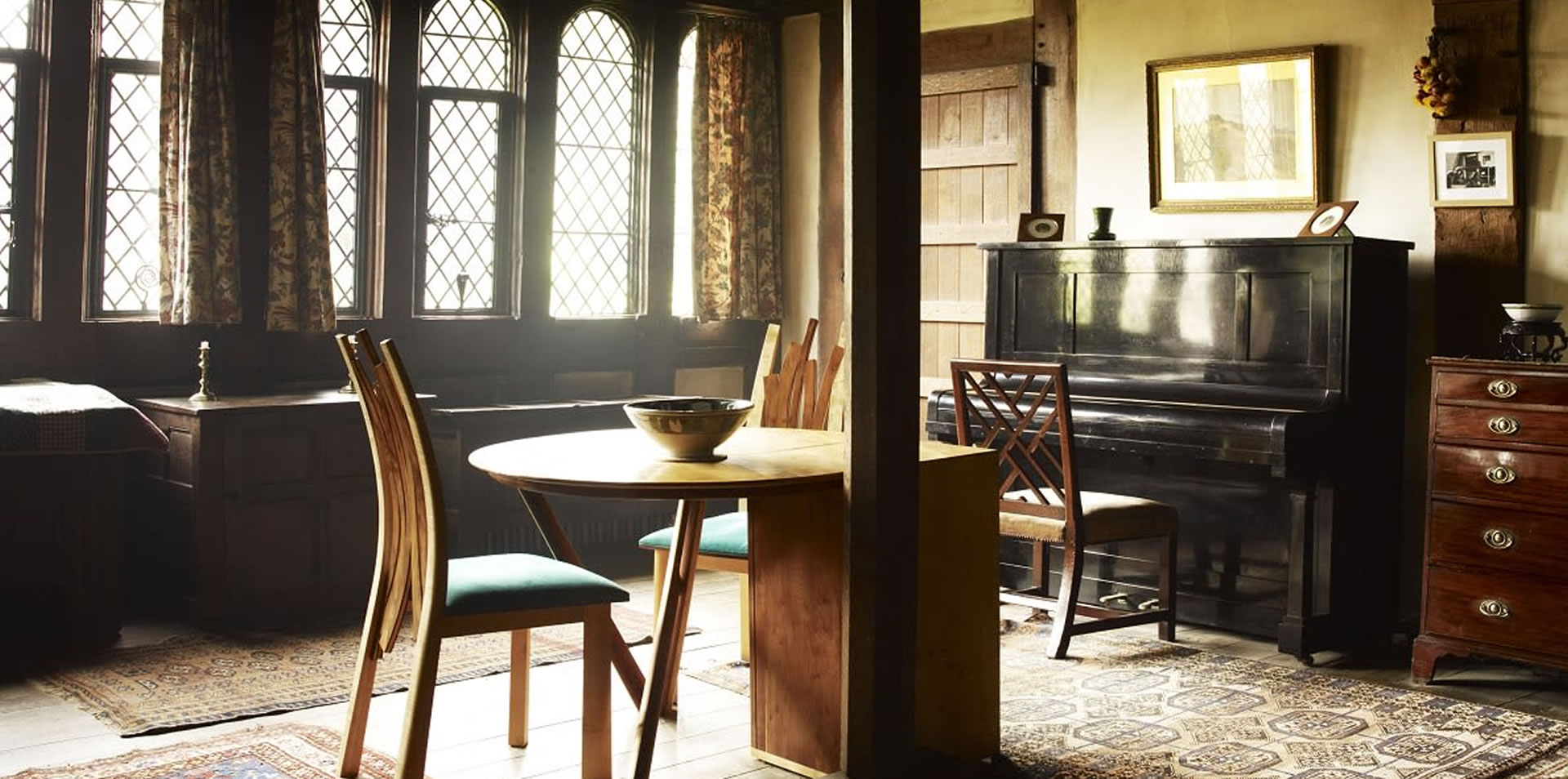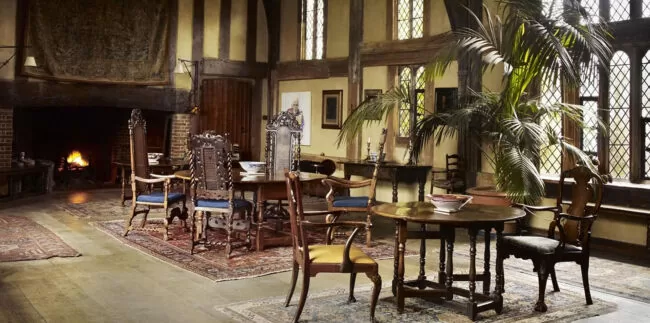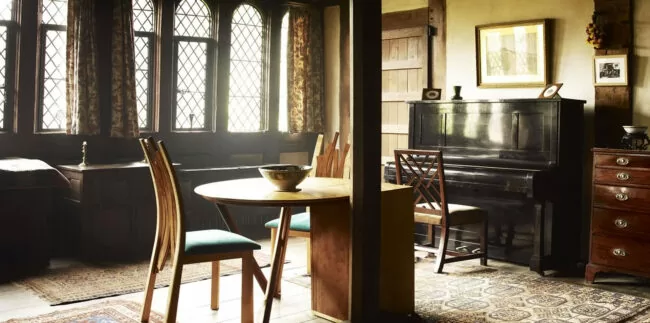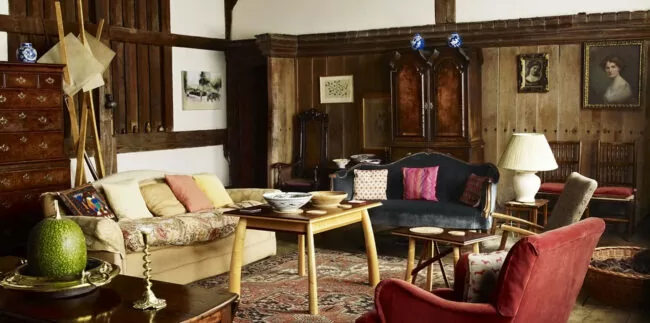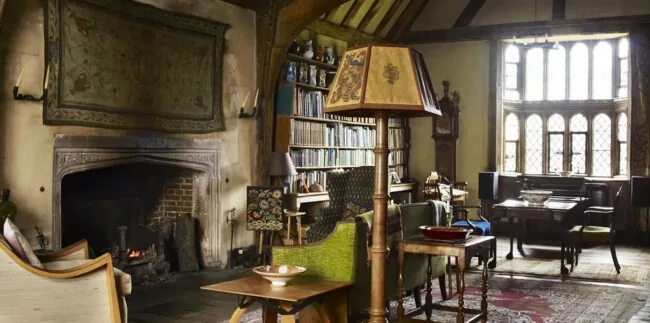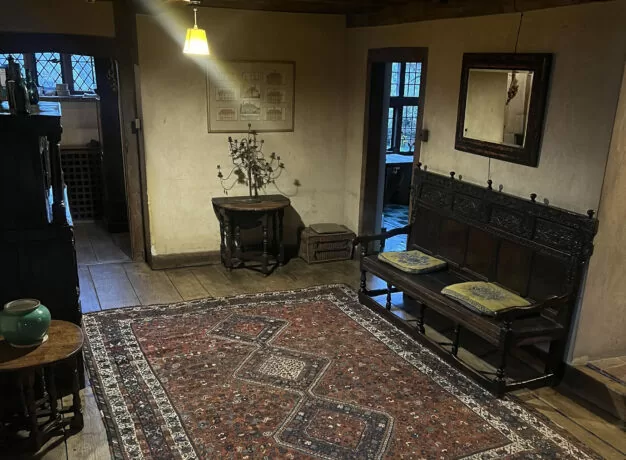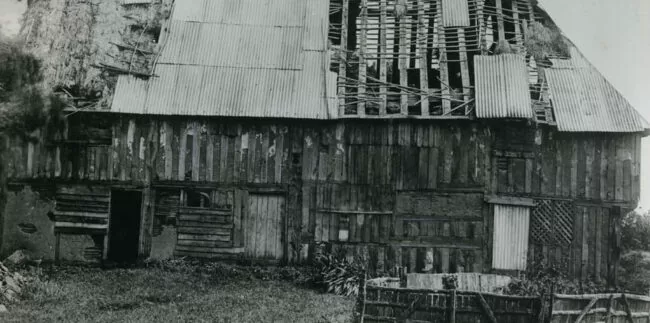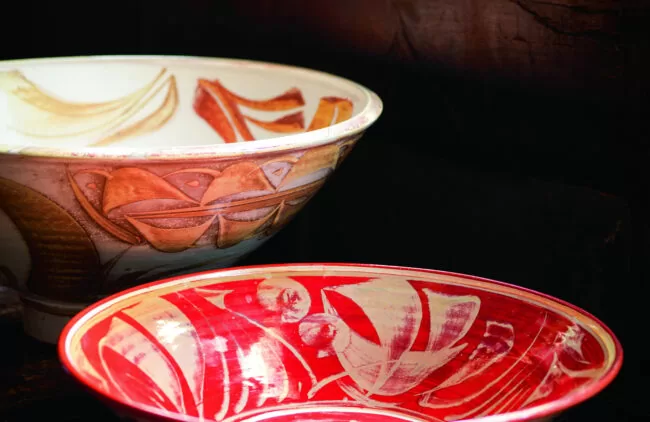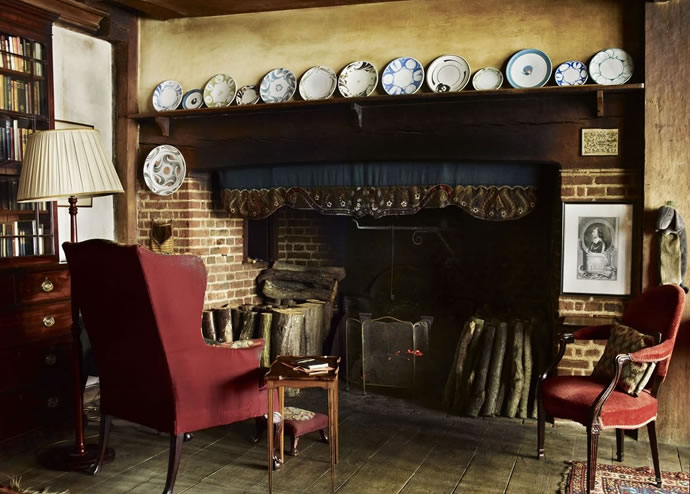The Parlour
In medieval times the parlour was one of the private rooms of the family to which they could retreat from the rather public Great Hall.
It was originally equipped with a stone fireplace similar to the surviving one upstairs in the Solar, but this was so mutilated and damaged by 1910 that Lutyens replaced it with the broad hearth and the reused timber beam we see today.
The room was originally about a third longer, but the late 16th-century partition was left by Lutyens and the room beyond became an office (not open to the public).
Carved on a beam above the piano can be seen the inscription: JOHN HARRISON DWELT ATT DIXTERN XXXVI YERS AN VI MONTHS. CAME YE FIRST OF ELISABETHE RAIN. Harrison was a tenant who occupied the house from 1558 until 1595 when the house was sold to John Glydd, who was responsible for the subdivision of the Great Hall. Until 1910 the beam and its inscription were hidden by a later plaster ceiling.
When the Lloyds moved to Dixter, Daisy Lloyd used the Parlour as her writing room. She was a skilled needlewoman and several examples of her embroidery can be seen here, including the fine armchair near the fireplace.
Most of the embroidery in the house is by Daisy or her children, and it was she who collected the samplers that hang in several rooms. She generally worked her embroidery by the south window in the Great Hall. The outer pairs of windows here in the Parlour were the only 15th-century ones to survive intact beneath later plasterwork and were used as the model for the restoration of those in the Great Hall.
